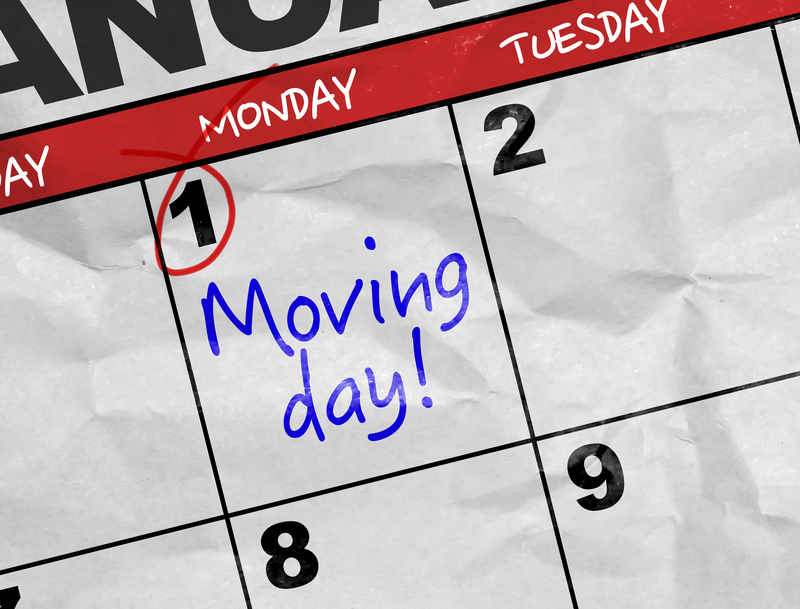Expert Advice for Packing up Your Home for Moving
Packing up your home for a move can feel like an overwhelming task. Whether you're relocating across the country or just to a new neighborhood, efficient organization and proper packing techniques are essential to ensure your belongings arrive safely and intact. In this comprehensive guide, you'll find expert tips and professional advice for packing up your house effectively, helping to minimize stress and maximize efficiency. Read on to learn proven methods for moving preparation, packing hacks, and everything you need for a successful relocation.
Why Expert Packing Makes a Difference
The process of packing up your home for a move can have a significant impact on the entire relocation experience.
- Proper packing protects your possessions from damage.
- It saves time during loading and unloading.
- Efficient packing minimizes the risk of losing items.
- Organization helps you settle into your new home faster.
By following expert advice and strategic tips, you'll reduce moving day chaos and make the transition smoother for everyone involved. Below, explore a step-by-step approach for professional-style packing.

Step 1: Start Your Moving Preparations Early
One of the most crucial tips from professional movers is to begin as early as possible. Early planning allows you to sort, declutter, and organize without feeling rushed. Here's a simple timeline to get you started:
- 6-8 Weeks Before Moving Day: Start sorting through each room. Decide what to keep, sell, donate, or throw away.
- 4-6 Weeks Before: Begin gathering packing supplies and notify utility companies of your move.
- 2-4 Weeks Before: Start packing non-essentials, such as seasonal items, books, and decor.
- 1-2 Weeks Before: Pack most of your household items and label boxes clearly.
- Moving Week: Finish up with essentials, double-check all rooms, and get ready for the big day.
Step 2: Gather Quality Packing Supplies
Avoid stressful last-minute runs to the store by gathering your materials early. Using the right supplies is key for effective moving house packaging:
- Sturdy boxes in various sizes (small boxes for heavier items, large boxes for lighter ones)
- Bubble wrap, packing paper, newspaper, or clothing to cushion fragile items
- Packing tape and a dispenser for efficiency
- Permanent markers or color-coded labels for clear identification
- Scissors or box cutters for opening and sealing boxes quickly
- Stretch wrap for securing items and preventing drawers from sliding
- Moving blankets or towels to protect furniture
If you hire a professional moving company, ask if they provide packing materials or if you need to supply your own.
Step 3: Declutter Before You Pack
Moving provides a perfect opportunity to declutter your home. Don't waste precious energy and moving truck space hauling things you no longer need. As you sort your belongings, ask yourself:
- Have I used this item in the last year?
- Does it hold sentimental value?
- Is it worth the cost and effort to move?
Pro Tip: Donate usable items to local charities, sell them online, or give them away to friends. You'll lighten your load and possibly make a little extra cash!
Step 4: Strategy for Room-by-Room Packing
Professional packers recommend tackling one room at a time. This organized approach prevents items from getting mixed up and makes unpacking much easier. Here's how to master room-by-room relocation preparation:
Kitchen Packing Tips
- Pack plates and glassware vertically with ample padding to prevent breakage.
- Use original boxes for small appliances if possible.
- Secure knives in oven mitts or wrap them in dish towels.
- Seal all open food containers and pack only non-perishables.
Bedroom Packing Advice
- Pack off-season clothing first, leaving essentials until last.
- Use wardrobe boxes to hang clothes on hangers.
- Label all bedding and linens for each bedroom.
- Disassemble furniture carefully and keep all hardware in labeled bags.
Living Room and Electronics
- Take photos of cable setups to easily reconnect electronics in your new home.
- Wrap TVs and monitors with moving blankets and secure with stretch wrap.
- Pack remotes, cables, and accessories in clearly labeled bags.
Bathroom Essentials
- Keep daily toiletries handy in a personal overnight bag.
- Pack liquids in sealed plastic bags to prevent spills.
- Throw away nearly empty or expired products.
Step 5: Label and Inventory Everything
A clear labeling system is a game-changer. Mark each box with the room destination, a summary of the contents, and handling instructions (e.g., Fragile, This Side Up).
For even better organization, number each box and keep a master inventory list--either on paper or using a digital app. This way, you know exactly where everything is and can quickly account for items after the move.
Step 6: Protect Fragile and Valuable Items
Proper handling of fragile items is one of the most crucial aspects of expert home packing for moving. Follow these recommendations:
- Use bubble wrap generously for glassware, dishes, and collectibles.
- Place heavier items at the bottom of boxes and lighter ones on top.
- Fill all gaps with packing paper to prevent shifting.
- Clearly mark boxes containing delicate items as FRAGILE.
- Keep important documents and valuables in a secure, easy-to-access place for personal transport.
Never pack irreplaceable items or critical documents onto the moving truck. Carry passports, birth certificates, jewelry, and computers yourself.
Step 7: Special Considerations for Large Items and Furniture
When preparing large furniture and appliances for moving, take extra precautions.
- Disassemble furniture as much as possible and keep all screws and bolts in labeled zip bags taped to the item.
- Wrap wood and upholstered pieces in blankets or moving pads to prevent dings and scratches.
- Secure drawers and doors with stretch wrap.
- Empty and defrost refrigerators and freezers at least 24 hours before moving.
Step 8: Essential Moving Day Packing Tips
On the final days before your move, pack a moving essentials kit--a separate box or bag containing items you'll need right away in your new home. Include:
- Important documents
- Medications and first aid kit
- Basic toiletries
- Phone chargers and electronics
- Snacks and bottled water
- Change of clothes and basic kitchen supplies
Keep this kit with you during the move for easy access.
Packing Mistakes to Avoid
Even with a solid plan, mistakes can happen. Here are common pitfalls to watch out for, and how to avoid them:
- Overfilling boxes, making them too heavy or causing breakage. Pack boxes no heavier than 50 pounds.
- Skipping labels. Every box should have a clearly marked destination.
- Ignoring specialty packing needs for delicate or valuable items.
- Procrastinating on packing and underestimating the time needed.
- Forgetting to set aside essentials for moving day and the first night.
Expert Packing Hacks for a Smooth Move
- Color-code your boxes: Use different colored tape or stickers for each room.
- Repurpose linens: Use towels and blankets for padding fragile items to save money and space.
- Take photos: Photograph valuable items and complex setups for reference after the move.
- Use drawer organizers to keep small items contained inside furniture.
- Fill suitcases with books or heavier items for easy rolling and transport.
Should You Hire Professional Packers?
While packing yourself can save money, many homeowners opt for expert packing services--especially for large homes or short timelines. Professional packers bring experience, supplies, and efficiency, often packing an entire home in just a day or two. Consider professional help if:
- You have limited time before your move.
- You own delicate antiques, artwork, or a large home library.
- Physical limitations make packing difficult or unsafe.
If you decide to hire help, get quotes from several reputable movers, read reviews, and confirm what's included in the packing service.
Unpacking: Making Settling In Easier
Once you've arrived at your new home, use your organized labeling system to prioritize unpacking. Start with essentials--kitchen supplies, bedding, and toiletries--then move room by room. Take your time setting up; careful unpacking prevents damage and helps you create a sense of order.

Final Thoughts: Mastering the Art of Expert Home Packing
Moving doesn't have to be a stressful ordeal. With early planning, the right supplies, careful organization, and smart packing techniques, you'll set yourself up for a smooth transition. Remember: The way you pack up your house plays a huge role in how successful your move will be. Whether you choose to do it yourself or hire professionals, keeping these expert tips in mind can make all the difference.
Ready to take on your next move? Be proactive, stay organized, and make the journey to your new home an exciting adventure rather than a stressful experience. Every step you take now pays off on moving day!
Frequently Asked Questions: Packing Up Your Home
1. What materials do professional movers recommend for safe packing?
- Sturdy, high-quality boxes
- Bubble wrap and packing paper
- Strong packing tape
- Stretch wrap for furniture
- Moving blankets and pads
2. When should I start packing before moving?
Begin sorting and packing at least 6 weeks before moving day. This gives you time to declutter, organize, and pack without stress.
3. How can I keep track of what's in each box?
Use a clear labeling and numbering system and keep a master inventory list, noting every item and its box number.
4. How do I move delicate and valuable items safely?
Pack these items separately with ample padding. For high-value pieces, consider custom crating or hiring professionals with experience in fragile moves.
5. What should I pack last before moving?
Essentials such as toiletries, medications, important documents, chargers, and daily-use kitchenware should be packed in an easy-access kit for the journey and first night in your new home.
By following these expert guidelines, your home packing experience will be organized, efficient, and far less stressful. Happy moving!



